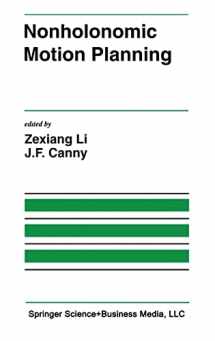
Nonholonomic Motion Planning (The Springer International Series in Engineering and Computer Science)
Book details
Summary
Description
Nonholonomic Motion Planning grew out of the workshop that took place at the 1991 IEEE International Conference on Robotics and Automation. It consists of contributed chapters representing new developments in this area. Contributors to the book include robotics engineers, nonlinear control experts, differential geometers and applied mathematicians.
Nonholonomic Motion Planning is arranged into three chapter groups: Controllability: one of the key mathematical tools needed to study nonholonomic motion. Motion Planning for Mobile Robots: in this section the papers are focused on problems with nonholonomic velocity constraints as well as constraints on the generalized coordinates. Falling Cats, Space Robots and Gauge Theory: there are numerous connections to be made between symplectic geometry techniques for the study of holonomies in mechanics, gauge theory and control. In this section these connections are discussed using the backdrop of examples drawn from space robots and falling cats reorienting themselves.
Nonholonomic Motion Planning can be used either as a reference for researchers working in the areas of robotics, nonlinear control and differential geometry, or as a textbook for a graduate level robotics or nonlinear control course.


We would LOVE it if you could help us and other readers by reviewing the book
Book review



